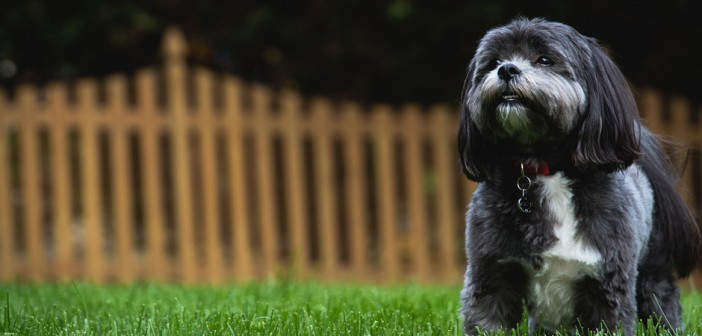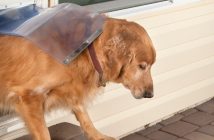For many of us, our pets are our furry children. In addition to loving and caring for them, we are their protectors – in the same way we baby-proof our homes for our little ones, we need to puppy-proof our outside spaces for our furry pals.
The most effective way to protect our pets in our outside environments is through the installation of an exterior fence or wall. Although they come in all shapes, sizes and colors, the primary purpose of a fenced-in yard is just that – to keep things in! Let’s take a look at the various factors for choosing the best option for you and your pet.
Fence or Wall?
A solid wall of brick or lumber is a great choice for keeping others from seeing into your backyard and keeping your dog from looking out. For example, if you have a persistent barker, obscuring his view to the outside world can help lessen his desire to bark: if he can’t see it, it’s not really there! Likewise, if he’s not constantly stimulated by the possibilities beyond the border of his yard, he’s less inclined to try to jump over and out.
Alternatively, an attractive picket or wrought iron fence can contain your dog while simultaneously making your yard appear larger. However, having a more open perimeter provides unique challenges based on outside access to your pup. Well-meaning children can be hurt by reaching through the slats to your not-so-kid-friendly dog, and unruly children have more opportunity to tease and harm your pet.
Break Out Points
In addition to the actual structure and materials of your outside barricade, you need to consider various aspects of fence vulnerability when making a final decision for your yard. Here are the four methods of exit and tips for combating a break out.
Over
A six-foot high fence is a good benchmark for most dogs – unless you have a large breed or a high jumper, the chances of over-escape are minimal. An extra measure of security could be the addition of an inward-pointing awning or roof at a 45 degree angle attached to the top of the fence which thwarts a jumper’s upward leap. A 90 degree angle is not the best solution because it could arguably provide a landing or ledge for clever jumpers to reach or use in hauling themselves over the rest of the way.
Around
If you are installing the fence yourself or commissioning the installation, make sure you have properly sealed off all edges or fully connected the fence post to the abutting structure. For example, if you are bringing the fence line right up to the side of your house, make sure there are no spaces between the fence and your siding through which a tenacious and persistent pup can wiggle.
Through
Speaking of wiggling, the “through” issue is not as relevant for large breeds but is a very real concern for smaller, more streamlined breeds. If you are going with a picket or wrought iron fence, make sure the pickets or bars are spaced far enough apart to give you the look you desire, yet close enough together to prevent an escape. At the same time, perform a regular check of the sturdiness of the wooden slats to ensure no loose boards go unnoticed by you because they most certainly will not go unnoticed by your canine kids!
Under
It’s in a dog’s very nature to dig – even if she wouldn’t know what to do with herself if she actually succeeded in breaching the fence, she’s going to give it her best efforts! No matter the type of fence or your pup’s breed, a good rule of thumb for any yard is lining the entire perimeter with chicken wire or burying the fence a couple of feet into the ground.
Additionally, the gate is a naturally weak portion of any fence which provides ample opportunity for an enterprising dog to beat the system so make sure he can’t squeeze through or dig under this point of your fence.
Everything in Between
A great option to marry form and function is planting shrubbery and flowers around the perimeter at the base of your fence or wall. Not only does this add that design element of beauty to your backyard landscaping, but it also aids in your security measures by discouraging escapes both over and under the fence.
For one thing, it lessens the appeal of digging because it camouflages the enticement of the fence itself – it’s not staring them right in the face anymore, taunting them by its very presence – because it is obscured by the foliage.
Moreover, it makes digging that much more difficult because now Champ has to aim for the spaces in between the plants, which may eliminate big dogs from the digging game entirely.
Finally, planting something directly in between the fence and the yard provides an extra layer of protection against an escape over the fence. Many breeds simply cannot navigate the depth or provide enough spring in the lift-off if they are required to get a running start.
By the same token, be sure not to place anything solid near the fence that your pup can use as a “step” or ladder in his efforts at breaking out of his holding cell. Avoid placing things like doghouses (with any kind of solid roof, flat or angled), trashcans, woodpiles and yard equipment within leaping distance of the fence or wall.
These are just a few of the things to keep in mind when plotting a course of exterior protection for our dogs. Do you have any tips you can share with pet owners considering a fence or wall outside?




